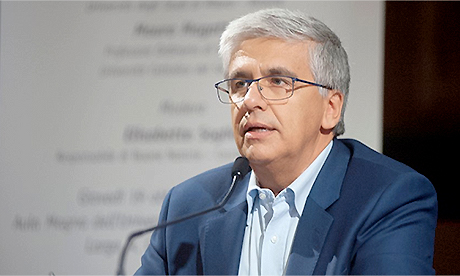These days we will find out whether Monsignor Carlo Alberto Capella, the former advisor to the Washington nunciature that the Vatican sentenced to five years’ imprisonment for possession and distribution of “large quantities” of child pornography, will present an appeal against the sentence.
A circumstance that various Vatican sources think very probable.
The traffic in child pornography is one of the most abhorrent crimes and many States – including the Vatican City State – have adopted very strict rules to punish it.
Capella did not deny the evidence, he admitted his guilt, and explained that he began to hook up with child pornography dealers on the web because of a “personal crisis” stemming from his transfer to Washington D.C.
Videos and explicit content were found on his smartphone and computer.
Loneliness, frustration at not having felt valued and having found himself alone, without friends…
Obviously the prelate had to have a predisposition for that kind of shocking images, which include children filmed in sexual acts and abuses, because fortunately child pornography is not a widespread landing place for personal crises or excessive loneliness.
Beyond the conclusion of the Vatican judicial affair, and the subsequent canonical trial to be celebrated against the former counselor of the nunciature, there remains the paradox: a prelate who has unleashed his perverse fantasies by compiling web images will have to serve a five-year sentence, while prelates who have effectively abused children and teenage boys ruining their lives, in several cases, do not spend even one single day in a cell.
The cardinals appointed during the long pontificate of John Paul II involved in abuses are now four.
Recent cases of illustrious founders or very prominent prelates (as the Chilean case teaches) prove it.
It is evident that in the case of Capella, the Vatican authorities wanted to set an exemplary tone, to show that no one will be given any discounts for the turbid phenomenon.
But the paradox remains.
The other striking case was that of Cardinal Theodore McCarrick, Archbishop Emeritus of Washington.
Accused of abusing a teenager about 45 years ago in New York, the prelate – who has been long retired – was suspended from his episcopal duties until his position became clear.
With McCarrick, the cardinals appointed during the long pontificate of John Paul II involved in abuses are now four (in total 231, created during 9 Consistories).
The first was the Archbishop of Vienna Hans Hermann Groer: nominated by surprise as the successor of Cardinal Franz König in 1986, elevated to cardinal in 1988, forced to leave the leadership of the diocese in 1995 following accusations of having abused, many years earlier, a number of underage seminarians.
The second was Cardinal Keith O’Brien, Archbishop of Saint Andrews and Edinburgh (Scotland), elevated to the red cap in 2003, retired in 2013 at the threshold of 75 years of age without participating in the conclave because he was accused of repeatedly abusing, in the Eighties and Nineties, two seminarians and a priest (of age).
The third is Cardinal George Pell, Prefect of the Secretariat for the Economy, who is defending himself in Australia from the accusation of having abused minors.
And now there is McCarrick.
Without going into details of each individual event – in the case of Pell, for example, certain testimonies leave considerable doubts open – one cannot help but notice the existence of a problem in the process of nomination of bishops. Continue reading
-
Andrea Tornielli is a journalist and is the coordinator of their website Vatican Insider
- Image: Communione e Liberazione
